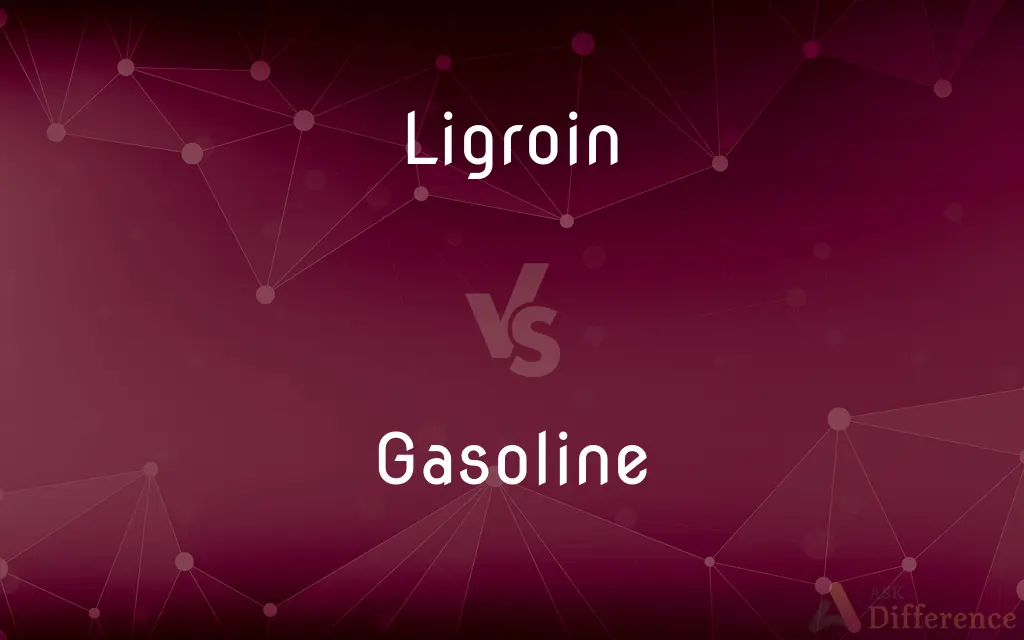Ligroin vs. Gasoline — What's the Difference?

Difference Between Ligroin and Gasoline
ADVERTISEMENT
Compare with Definitions
Ligroin
Ligroin is the petroleum fraction consisting mostly of C7 and C8 hydrocarbons and boiling in the range 90‒140 °C (194–284 °F). The fraction is also called heavy naphtha.
Gasoline
Gasoline () or petrol () (see the etymology for naming differences and the use of the term gas) is a transparent, petroleum-derived flammable liquid that is used primarily as a fuel in most spark-ignited internal combustion engines. It consists mostly of organic compounds obtained by the fractional distillation of petroleum, enhanced with a variety of additives.
Ligroin
See naphtha.
Gasoline
A volatile mixture of flammable liquid hydrocarbons derived chiefly from crude petroleum and used principally as a fuel for internal-combustion engines.
Ligroin
(archaic) A petroleum fraction boiling 75°-125°C used as a solvent and fuel.
ADVERTISEMENT
Gasoline
A flammable liquid consisting of a mixture of refined petroleum hydrocarbons, mainly used as a motor fuel; petrol.
Ligroin
A trade name applied somewhat indefinitely to some of the volatile products obtained in refining crude petroleum. It is a complex and variable mixture of several hydrocarbons, generally boils below 170° Fahr., and is more inflammable than safe kerosene. It is used as a solvent, as a carburetant for air gas, and for illumination in special lamps.
Gasoline
(countable) Any specific kind of gasoline.
The refinery produces a wide range of gasolines.
Gasoline
Marijuana, especially very potent or high quality.
Gasoline
(slang) An alcoholic beverage made of vodka and energy drink.
Gasoline
Made from or using gasoline.
Gasoline
A highly volatile mixture of fluid hydrocarbons, obtained mostly from petroleum, as also by the distillation of bituminous coal. It is used as a fuel for most automobiles and for many other vehicles with internal combustion engines. The gasoline of commerce is typically blended with additives to improve its performance in internal combustion engines. Gasoline was also used in the early 1900's in making air gas, and in giving illuminating power to water gas. See Carburetor.
Gasoline
A volatile flammable mixture of hydrocarbons (hexane and heptane and octane etc.) derived from petroleum; used mainly as a fuel in internal-combustion engines
Share Your Discovery

Previous Comparison
Welcoming vs. Hospitality
Next Comparison
Folder vs. Dossier













































